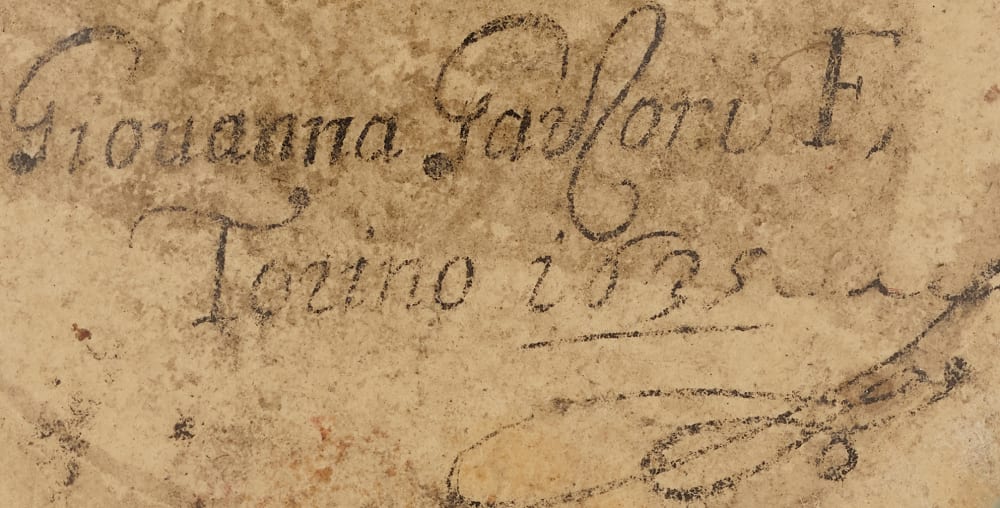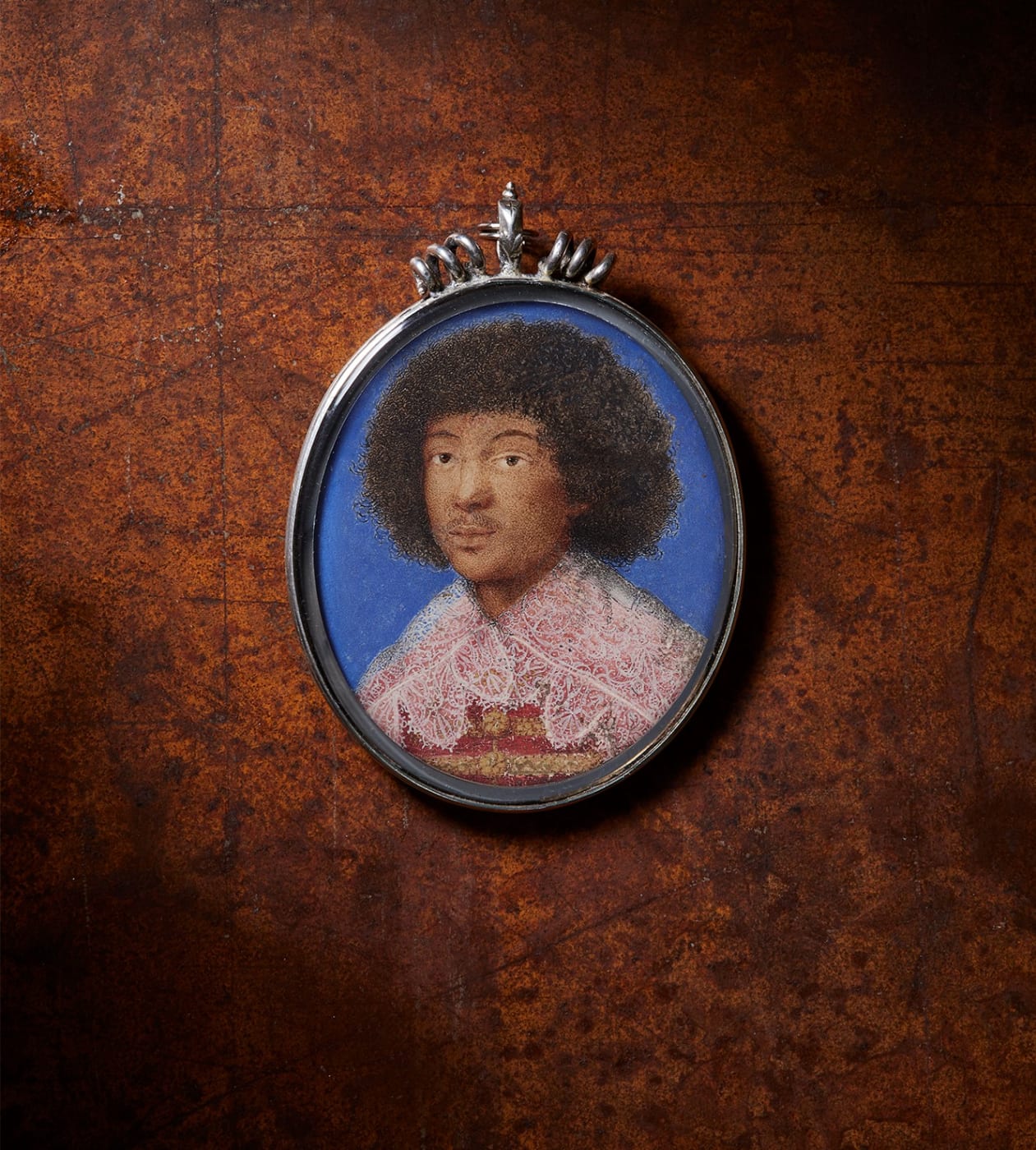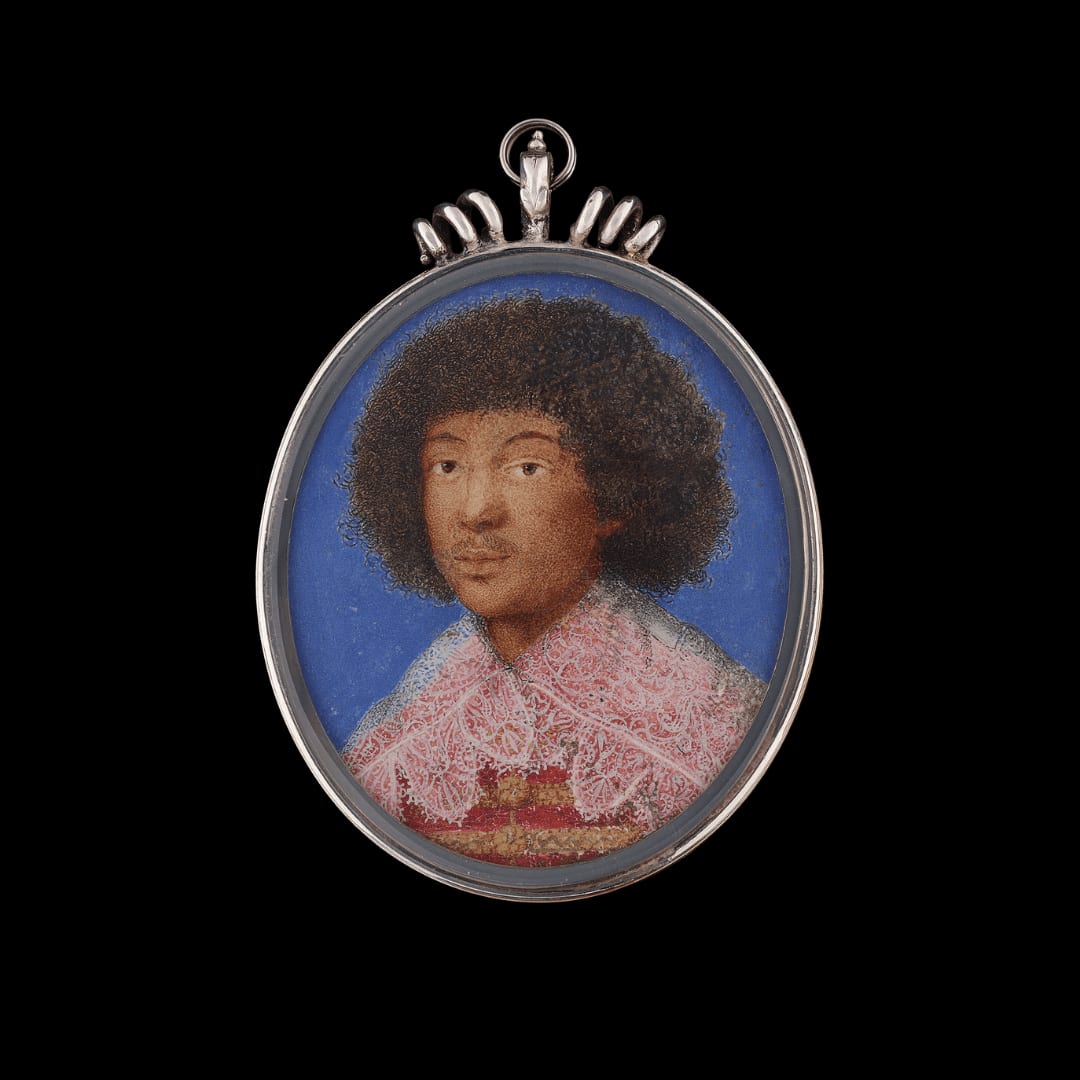
This sensitive portrait is the earliest known European portrait miniature to depict a black sitter. Travelling through Italy after his perilous journey from Ethiopia, the self-proclaimed prince, Zaga Christ, was welcomed to the court at Turin in the winter of 1634. Here, he met Victor Amadeus I, Duke of Savoy (1587-1637), and was introduced to his court painter, the brilliant female artist Giovanna Garzoni (1600-1670), who painted him as a courtier.
Now, opening in Florence on Thursday 28th May, is The Greatness of the Universe in the Art of Giovanna Garzoni, a new exhibition dedicated to Garzoni, Marche-born painter friend of Artemisia Gentileschi, which will include this portrait miniature. Hosted in the Andito degli Angiolini space at Palazzo Pitti, the show has been curated by Sheila Barker of The Medici Archive Project. Since it was painted, between the winter of 1634 and the spring of 1635, the miniature has been located in private collections in France, Switzerland and England, so it is particularly appropriate to see it briefly returned to the place of its conception.
The facts of Zaga Christ's early life are unclear, but what is known for certain is that by 1632 he had arrived in Jerusalem, claiming to be the rightful King of Ethiopia. By his own account, he was the son of a deposed Ethiopian king, who had been killed in battle. Zaga Christ had fled the pursuing forces of his father's rival to Sudan. When taking refuge there, a local king had proposed a marriage to his daughter, which Zaga Christ rejected as it would have necessitated his conversion from Ethiopian Christianity to Islam. Instead, he decided to travel to Cairo, crossing five deserts in order to get there (Zaga Christ claimed that when he dropped a parasol, the sand was so hot that he couldn't retrieve it).
Zaga Christ's arrival in Jerusalem was effectuated by missionaries from the Catholic order of Franciscan monks and they too were responsible to Zaga Christ's next journey: to Rome, where he stayed for the next two years. In Rome, he seems successfully to have presented himself as the Pretender to the Ethiopian throne. He was even granted an audience with Pope Urban VIII, whose feet he kissed. In Rome, Zaga Christ moved ever closer to Roman Catholicism and away from the native Christian tradition of his homeland. Through his connections to the Franciscans, Zaga Christ was introduced to a nun by the name of Caterina Massimi. The two are supposed, scandalously, to have had an affair, conducted by way of letters written in their own blood.
The intimacy of the relationship between the sitter and the artist in this portrait is alluded to on the card reverse of the miniature. Usually hidden from view, the reverse has been inscribed twice, once in Italian and again in Ethiopic script. This latter inscription reads 'ዥዋኘ [or 'ዥዋፐ]፡ ጋርሶኔ፡ ፌ +' ('Žǝwañä [or Žǝwapä] Garsone Fe +') and is doubtless an attempt to render the name given second in Roman script, 'Giovanna Garzoni F. +'. The poorly-executed letterforms suggest that this was written by someone unfamiliar with Ethiopic script, most likely the artist herself.
We are grateful to the help of Professor Alessandro Bausi and Professor Samantha Kelly for translating the Amharic script on the reverse.
Find The Greatness of the Universe in the Art of Giovanna Garzoni exhibition catalogue here.



